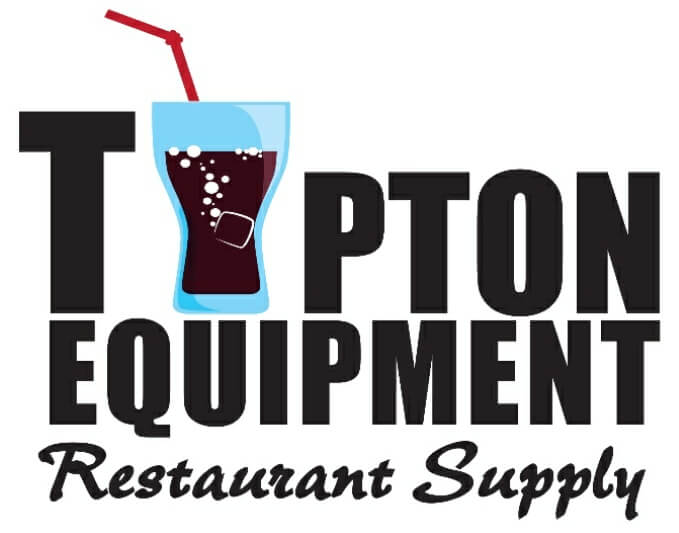Choosing the Right Cutting Board
March 18, 2019Every kitchen, from a food truck to a large restaurant, needs cutting boards. From vegetables to bread to meat and fish, your chefs and cooks have to chop things every day.
Have you put a lot of thought into this important piece of kitchen equipment? Like many other items you might take for granted, the truth is there are many, many options available.
From different sizes and shapes to a variety of materials, there’s a lot to think about when it comes to cutting boards. Here’s what you need to know.
What Material is Best?
This is an area that is open to significant debate. There are four primary types, with variations within each. Let’s look at everything, from wood to bamboo to plastic, to help you make a decision.
Wood Cutting Boards
Wood boards are the most traditional and are extremely popular. They’ve gained a bad rap with the rise of plastic cutting boards, but the truth is that the traditional kitchen equipment is still one of the best kinds.
Many wood boards are quite hard and resist grooving. You can choose woods that are less porous as well, to avoid absorption of juices and bacteria. Keep in mind that the cleaning and maintenance of wood is a bit more involved as well.
Bamboo Cutting Boards
Although it looks like wood, bamboo is actually a fast-growing grass. This makes bamboo boards not only economical but excellent for the environment. It’s less porous than most woods and very durable.
Like wood, this type of kitchen equipment requires oiling to maintain so that the board doesn’t split. Washing is similar to wood, using soap and water and being able to stand up to a dishwasher.
Plastic Cutting Boards
These have been the darling of commercial kitchens for some time, but the benefits may be overblown. Many plastic cutting boards quickly develop grooves that can be hard to clean, requiring you to replace them more often.
However, many kitchens find plastic cutting boards to be affordable, making it easy to have enough on hand. In addition, they come in a variety of colors, making color-coding simple. This along with their durability can make them the right kitchen equipment for your restaurant.
Rubber Cutting Boards
Rubber boards are non-porous and non-absorbent, while also being resistant to warping. They are easy to clean but are not safe in a dishwasher. They don’t require a lot of maintenance but must be replaced once they are scarred by knife use.
Choose the Right Kitchen Equipment for Your Restaurant
Once you decide on a material, you’ll need to think about how many you need and what sizes. If you have a small kitchen, you may need fewer boards, but don’t skimp. If you don’t have enough your staff are more likely to reuse and mix boards, causing problems with food safety.
If you’re ready to get better cutting boards or need other kitchen equipment, let us help. We have been working with Little Rock restaurants for years, helping them source the equipment they need. Contact us for a quote today!
5 Things Every Restaurant Owner Should Do Before Buying Used Kitchen Equipment
Equipping your restaurant properly can cost a lot of money, so buying used kitchen equipment is the go-to choice for many restaurateurs. Buying used kitchen equipment for a restaurant is a bit different than buying used equipment for your home, however. You will...
Top Restaurant Technology Trends in 2018
When looking to buy restaurant supplies, you want to be on the leading edge of technology trends. This will keep your kitchen running smoothly. Let’s take a look at some of the most recent trends in restaurant supplies technology. 1. New Payment Options Who would...
5 Different Ice Shapes and Why You Should Care About Them
Ice makers are very popular in the restaurant and foodservice community because they eliminate the need to buy ice every day. And of course, adding an ice maker to your collection of foodservice equipment means you will always have ice on hand when you need it. An...
Pulping and Grinding: A Starter’s Guide to Reducing Commercial Food Waste Costs
For most restaurant owners and managers, the expenses involved in making meals are always under careful consideration. Water is needed to prepare, cook and wash food; power is necessary for food prep, cooking and cooling, and so on. However, how many of us consider...
Choosing the Right Milk Cooler: Cold Wall or Forced Air?
In a restaurant, milk is an essential to have on hand for coffee and other café-style beverages, for serving with kids’ meals, and as a key ingredient in many recipes. Keeping your milk properly chilled can be difficult without the proper restaurant equipment....
How to Choose Your Next Commercial Meat Smoker
The movies that connect with us on a personal level are the ones that linger in our memories forever. Anyone who has used a commercial meat smoker knows that they have a huge influence on the taste of a meal. You need to have just the right kitchen equipment to get a...
Are High Speed Ovens Too Good to be True?
You might have heard a few of the bold claims that foodservice equipment manufacturers have been making about high speed ovens, but they can’t be possible, right? Cooking three times as faster as regular ovens? Five times as fast? Fifteen times as fast? It may seem...
Choosing the Right Food Storage Containers for Your Restaurant
Choosing the right kitchen supplies will make a difference in your restaurant. Whether it is heavy duty kitchen equipment or food storage containers, each piece of equipment plays its own important role. Today, we are going to talk about how to choose the right food...
Tipton’s Guide to Perfect Poultry Trussing
Do you ever truss birds in your commercial kitchen? Trussing is a fantastic cooking technique because it makes poultry cook faster, look more attractive and taste better. If your commercial kitchen prepares poultry, you don’t want to miss these trussing tips. Trussing...
How to Eliminate Excess Condensation in Your Kitchen
Is your commercial kitchen getting steamy? If so, you could have more than just an uncomfortable working environment on your hands. Excess moisture in your commercial kitchen can result in the corrosion of equipment, the development of mold, and even damage to your...
The DIY Guide to Your Restaurant’s Own Garden
Stocking your restaurant supply with your own home-grown herbs and produce can truly bring your dishes to life. When it comes to food, everyone knows there’s nothing like homemade and home-grown. Having your own culinary garden, however large or small, can help you...
5 Reasons a Meat Grinder Will Set Your Burgers Apart
The more you do to prepare your foods in-house with the right kitchen equipment, the fresher and more flavorful your dishes become. There are all sorts of restaurants offering fast-food style burgers, but some diners are looking for the real deal. A fresh, juicy...
Pest Preventions to Implement in Your Commercial Kitchen
Restaurant pests: it’s something that few people want to think about. Like it or not, pest management is an essential consideration for every commercial kitchen. Offering food, shelter and water, the unprepared commercial kitchen naturally provides everything pests...
Choosing the Right Material for Your Cooking Equipment
Kitchens are very unique to their chef. Just like a car mechanic has a toolbox unique to them, so is the cooking equipment in a kitchen. And over time, the same cooking equipment become a natural extension of the chef. What tools are you using in your kitchen? It...
Kitchen Hacks for Your Home
Some people are naturally good at certain skills. We all know someone who is naturally book smart, athletic, or musically inclined. What makes you jealous of them is how easy they make tasks seem compared to you. One skill might be cooking. Your dream may not be...















